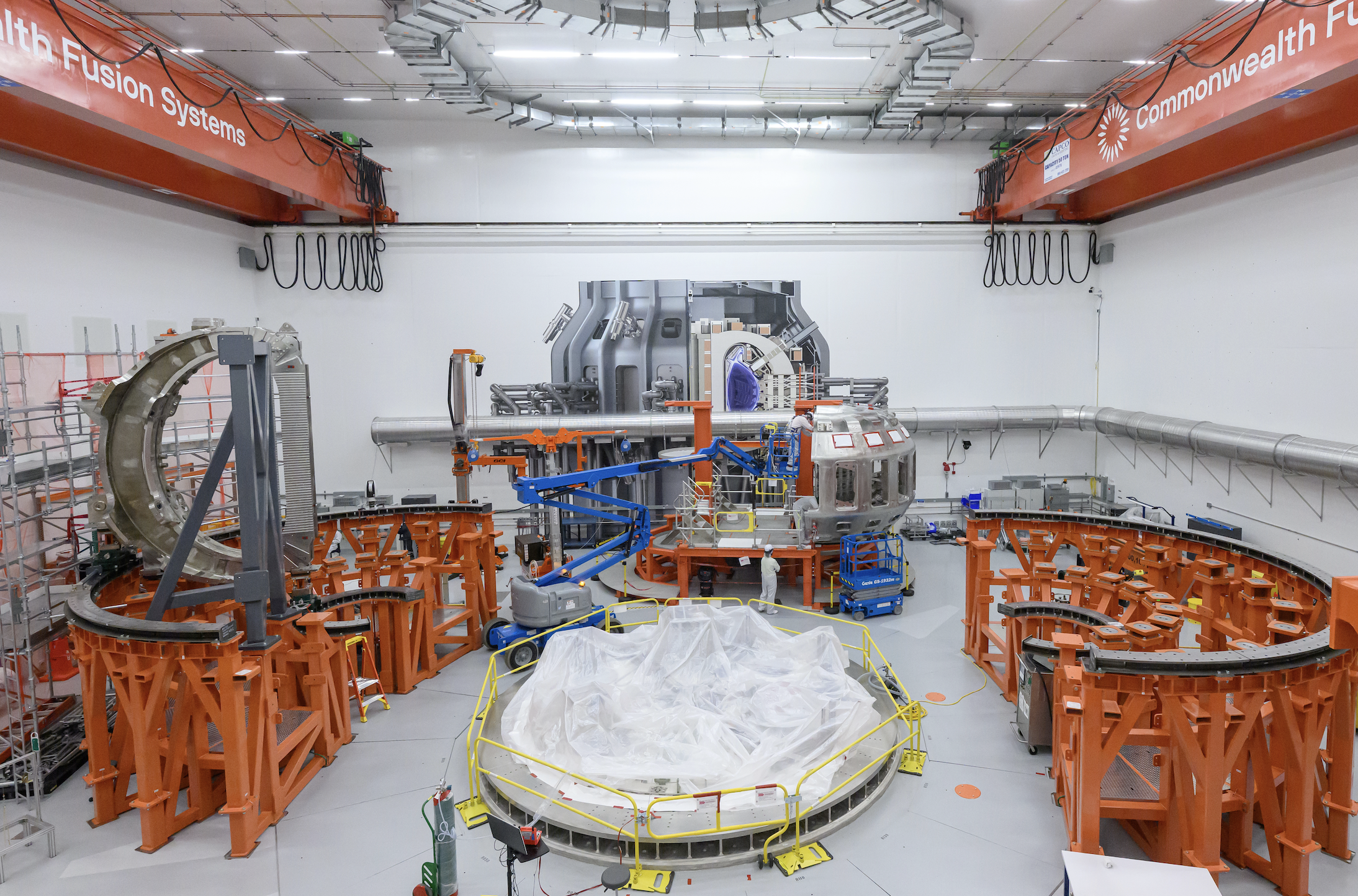The idea of space-based solar power – capturing sunlight in space and beaming it as microwaves back down to Earth and then converting it into electricity to power the grid – first emerged in the 1960s and was deemed technically feasible in the 1970s but until recently was deemed too impractical or too expensive.
However, developments in low-cost satellite launch, technology advances and more modular solar power satellite concepts are changing the economics, bringing space-based solar power (SBSP) in reach.
If some projections are right space-based solar power could provide up to 20% of the world’s energy needs by 2050, with studies by King College London suggesting SBSP could cut Europe’s renewable energy needs by 80% by 2050. It is one of the promising technologies being reviewed by the World Economic Forum’s Global Future Council On Energy Technology Frontiers. (The Innovator’s Editor-in-Chief is a member of the council)
“Space-based solar is now economically and technically viable,” says David Homfray, a member of the Council and the Chief Technology Officer of UK-based Space Solar, a scale-up working on space-based solar power. “I think this is an era-defining technology.”
The space race for sustainable energy is already underway. Nations and private companies are investing heavily in SBSP research. The UK has emerged as a key player, with government investment supporting the development of Space Solar’s CASSIOPeiA architecture. This effort is backed by several derisking demonstrators funded by the UK Space Agency and the Department of Energy Security and Net Zero (DESNZ) which will deliver a commercial system within six years. The UK has also established the Space Energy Initiative, a coalition of over 90 organizations from industry, academia and government. Japan, a long-time leader in the field, and S. Korea are separately working on the technology. In the United States, Caltech has successfully tested a prototype, demonstrating wireless power transmission in space for the first time. In Europe, the European Space Agency (ESA) has studied its feasibility through the SOLARIS initiative. And China has announced plans that begins with a small test satellite later this decade, scales to a one-megawatt demonstrator in the 2030s, and imagines a full-scale one-gigawatt orbital station by mid-century.
A One Kilometer Wide Solar Array in Space
Like China, Space Solar plans to place large satellites with solar panels in geostationary orbit, some 36,000 kilometer above the Earth, where they bask in uninterrupted sunlight 24/7. This constant stream of solar energy is then converted into microwaves and beamed down to receiving stations on the ground. At a controlled peak intensity of around 230W/m², the beam is about a quarter of the strength of the midday sun when it reaches earth, making it safe for people and animals.
The energy is collected by a receiving antenna, or “rectenna”, a lightweight mesh of antennas on poles. This makes the ground station relatively inexpensive to build. Because the rectenna is largely transparent, the land beneath can be used for growing crops or co-located with terrestrial solar panels, enabling dual use. The rectenna converts the microwave energy back into electricity, which is then fed into the power grid.
The components needed to build the satellite are sent into space via rocket. Space Solar’s modular satellite design requires that the large-scale structures – ultimately spanning over a kilometer in diameter but starting at a hundred meters – be assembled in space using robotic systems. The scale-up has already validated the assembly process in a real-world robotics lab using off-the-shelf and 3D printed components, Homfray says.
Once the satellite is in place it will be electronically oriented to constantly reflect sunlight onto the solar panel array below, a key differentiator with China’s project, which relies on joints, which are more prone to breakdown, Homfray says.
Economies of Scale
It has only recently become feasible to build such systems. For starters the cost of space launch has been reduced by 90% from $20,000/kg to under $2000/kg, with the introduction of partially reusable rockets by SpaceX and others, says Homfray. That trend is set to continue with the advent of fully reusable rockets such as the SpaceX Starship. There have also been great advances in autonomous robotic systems and semiconductor technology leading to improved efficiency for space use. And, new modular solar power satellite designs such as Space Solar’s CASSIOPeiA’s are much lower in mass and production cost.
“If all goes to plan we will have derisked all the major technologies for our system by 2028, megawatts of commercial power by 2031 and gigawatts of economic and industrialized power within the decade,” says Homfray.
Why It Makes Sense To Harvest Solar In Space
Space-based solar power will compliment, rather than replace, other technologies that are expected to enable the energy transition, such as renewables and Small Modular Reactors (SMRs) advanced nuclear reactors that produce up to 400 MW(e) of low-carbon electricity, says Homfray.
“Space-based solar will be an important part of the clean energy mix,” he says, using less land mass and less resources then intermittent renewables.
Existing renewables have drawbacks:
*They require a significant expansion in electricity grid transmission pylons and cables to connect them to users.
*They need suitable storage, which currently does not exist at the capacity or cost needed.
*Duplicated back-up, which is expensive, and other sources of baseload power is necessary for times when it’s cloudy or there’s no wind.
*Wind, solar and batteries require many tons of minerals to be mined and refined for each megawatt-hour of energy.
SBSP offers several key advantages, Homfray says. With no night or weather in space a solar panel in the sky generates 13 times as much energy than the same panel on Earth. SBSP, if built, would generate power continuously, transmitted as microwaves through the atmosphere with almost no loss. It could therefore deliver baseload power 24 hours a day, irrespective of local weather conditions on Earth.
Space-based solar power is also dispatchable. Each satellite can view a quarter of the globe, allowing it to move power between countries almost instantaneously, acting like a giant interconnector in space. This advantage allows SBSP to effectively smooth out the unpredictable and varying output from wind and solar, doing away with the need for fossil-fueled powered gas-fired peaker plants on a global level, he says.
It is also can be scaled far more quickly than other forms of alternative energy, such as new nuclear or geothermal plants, because the infrastructure is easily replicable.
Studies suggest a significant proportion of the world’s energy needs could be met by SBSP at “an extremely economical cost, ‘Homfray says. For example, a recent whole-energy-system study by researchers at Imperial College London concluded that introducing just 8 GW of SBSP into the UK’s energy mix would deliver system savings of over £4 billion every year.
Battling Skeptics
Despite the arguments in its favor space-based solar power has its skeptics. NASA published a report from its Office of Technology, Policy and Strategy that questioned the cost and practicality of SBSP. Henri Bardee a retired engineer who used to work for the European Space Agency (ESA) stressed the technical challenges in a report for the IEEE as did a recent article in the digital publication Cleantechnica.
While technical challenges remain Homfray says he is convinced they can be overcome. And, he says NASA’s skepticism is based on conservative assumptions on the economics. NASA assumed an operating life of only 10 years so to run for 30 years the whole solar power satellite would have to be built and launched three times. Yet satellites today generally last for more than 25 years, with most baselined for a minimum of 15 years, he says. The NASA report also assumed that a satellite launched by Starship would remain at around $1500/kg. However other independent analysis forecast that will be about $100/kg by 2040, he says.
What’s more the cost of building space-based solar power is relatively low compared to the development of technologies such as fusion. The UK government, for example, in its nuclear bill has allocated between $40 billion for new nuclear buildout and research into fusion energy. “For about a half a percent of that we could have solar power in space within three to five years,” says Homfray. He points out that the SBSP research itself has benefits. “Even if the approaches that China, Japan, America, UK and S. Korea are developing were all wrong the relatively small investment and funding for the research would be worth it because it will lead to advances in wireless power transmission, space robotics, flexible, low mass electronics and space sustainability,” he says. “The journey itself is inherently valuable.”
Space Solar has so far raised $6 million dollars in angel funding and grants from the UK Space Agency. It is currently raising a seed round of venture capital.
The Need for Speed
The world needs an affordable, scalable and fully renewable new baseload energy technology, says Homfray. The amount of energy that will be needed is expected to double by 2050. And the need for speed is more urgent than ever.
As the Forum working group on the energy transition was traveling to Dubai this week for the annual meeting of the Global Future Councils scientists and conservationists were releasing a report that said the Earth has reached its first catastrophic tipping point linked to greenhouse gas emissions, with warm water coral reefs now facing a long-term decline. The report from researchers at the University of Exeter’s Global Systems Institute in England warns the world is also “on the brink” of reaching other tipping points, including the dieback of the Amazon, the collapse of major ocean currents and the loss of ice sheets.
“We urgently need new affordable, continuous, and flexible energy generation technologies if we are to meet global demand while delivering Net Zero,” Homfray says. “Space-based solar power is poised to be an important part of that mix.”
This article is content that would normally only be available to subscribers. Become a subscriber to see what you have been missing.







